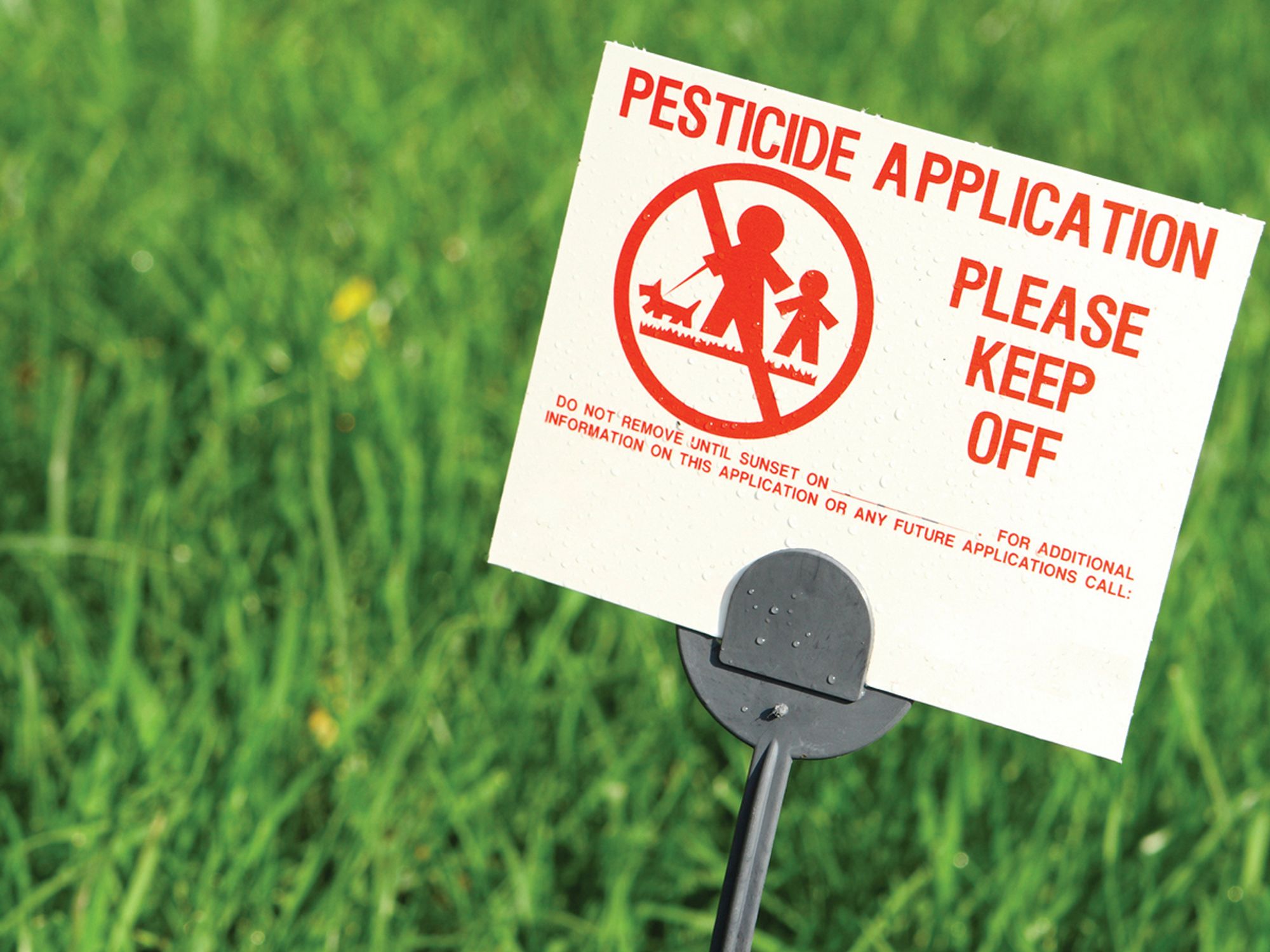What are pesticides?

- A pesticide is any substance or mixture of substances intended for preventing, destroying, repelling, or mitigating any pest; or intended for use as a plant regulator, defoliant or desiccant.
- The term pesticide product is another term defined by EPA, and pesticide products contain both active and inert ingredients.
A “pesticide” is any substance or mixture of substances intended for preventing, destroying, repelling, or mitigating any pest; or intended for use as a plant regulator, defoliant or desiccant. See the technical definition of the term pesticide at 40 CFR 152.3.
“Pesticide product” means a pesticide in the particular form (including composition, packaging, and labeling) in which the pesticide is, or is intended to be, distributed or sold. The term includes any physical apparatus used to deliver or apply the pesticide if distributed or sold with the pesticide. Pesticide products contain both “active” and “inert” ingredients:
- An “active ingredient” prevents, destroys, repels, or mitigates a pest, or is a plant regulator, defoliant, desiccant, or nitrogen stabilizer.
- All other ingredients are called “inert ingredients” by federal law. They are important for product performance and usability.
Active ingredients
Active ingredients are the chemicals in a pesticide product that act to control the pests. Active ingredients must be identified by name on the pesticide product’s label together with its percentage by weight.
There are several categories of active ingredients:
- Conventional — All ingredients other than biological pesticides and antimicrobial pesticides.
- Antimicrobial — Substances or mixtures of substances used to destroy or suppress the growth of harmful microorganisms, whether bacteria, viruses, or fungi, on inanimate objects and surfaces.
- Biopesticides — Types of ingredients derived from certain natural materials.
Inert ingredients
Pesticide products contain at least one active ingredient and other intentionally added ingredients. Called inert ingredients by the federal law, they are combined with active ingredients to make a pesticide product. Inert ingredients are chemicals, compounds, and other substances, including common food commodities (e.g., certain edible oils, spices, or herbs) and some natural materials (e.g., beeswax or cellulose).
The name “inert” does not mean non-toxic. All inert ingredients must be approved by the Environmental Protection Agency (EPA) before they can be included in a pesticide. EPA reviews safety information about each inert ingredient before approval. If the pesticide will be applied to food or animal feed, a food tolerance is required for each inert ingredient in the product, and the agency may limit the amount of each inert ingredient in the product.
Inert ingredients play key roles in pesticide effectiveness and product performance. Examples of functions that inert ingredients can serve include:
- Acting as a solvent to help the active ingredient penetrate a plant’s leaf surface;
- Improving the ease of application by preventing caking or foaming;
- Extending the product’s shelf-life;
- Improving safety for the applicator; and
- Protecting the pesticide from degradation due to exposure to sunlight.
Under federal law, the identity of inert ingredients is confidential business information. The law does not require manufacturers to identify inert ingredients by name or percentage on product labels. In general, only the total percentage of all inert ingredients is required to be on the pesticide product label.
Intended use
It should be noted that EPA says that it is the “intended use” of a product that determines if it is a pesticide. If a company can answer “yes” to the any of the following questions, the product is a pesticide:
- Claims — Does the product’s label or distributor claim that the product can or should be used as a pesticide?
- Composition — Is the product composed of one or more active ingredients that have no commercially valuable use other than for a pesticidal purpose?
- Knowledge that the substances will be used as a pesticide — Does the distributor know that the product will be used for a pesticidal purpose?
